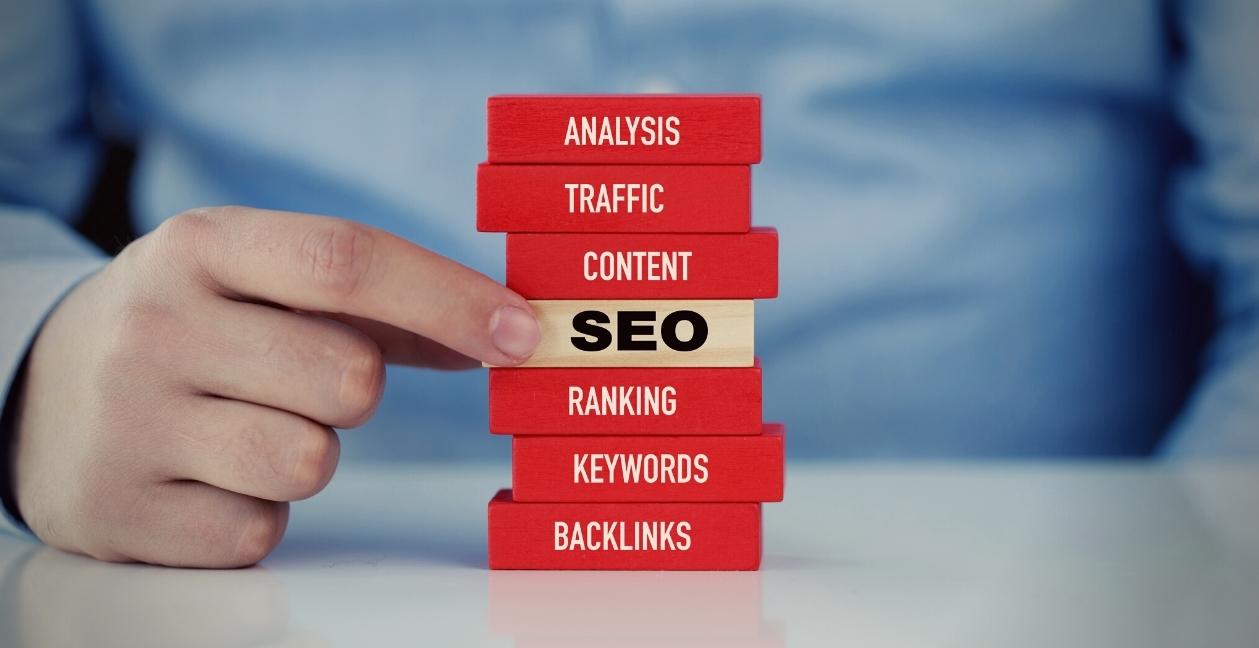Google never stops optimizing for its users, meaning people have to constantly focus on Google updates that, in turn, stress elements of SEO and content best practices. Google’s updates may involve algorithmic changes or could be unveiling new features and products.
One example can be search engine result page (SERP) format changes, or a change could relate to new ranking signals that avoid lower-quality content and help Google better understand consumer behavior. The constant Google focus on consumer behavior means the search engine is always rolling out new updates that are designed to improve both search and website experiences.
Much of Google’s recent changes related to improving page speed and Core Web Vitals and product reviews show the importance of quality content to Google. Search Engine Land’s helpful content update (HCU) stresses content for human beings more than just for ranking and not providing anything useful when people are seeking information.
Just as there can be marketers who struggle to recognize these changes and adapt accordingly, there can also be many others who are following closely and know how to adjust. The bottom line to being successful with Google often relates to simply ensuring your website is delivering high-quality content.
A marketer is going to have goals that are much the same as Google itself, meaning that their content is bound to resonate with an audience, engage the audience, and lead to conversions. This needs to be true regardless of how a consumer discovers the content.
When you are trying to keep up with Google, you can benefit by thinking of where Google is heading. If you can stay ahead of the search engine, you will give yourself a better chance of ranking highly.
The end result is that you need to ensure that your website content is optimized not just for the Google algorithm but for the actual end user. Here are the five shifts you will need to adjust to.
1) Your SEO Needs to Be Not Just to Rank But for Content Convergence and Performance
Your content by itself does not translate to success with SEO, but SEO alone also does not translate to people finding your content and engaging with it. This means that your content needs to be created for a specific audience, feature some level of expertise, be seen as being trustworthy and credible, and satisfy a searcher’s want(s) or need(s).
Solid SEO and content marketers will be able to capitalize on irrelevant content and over-optimizing just for rankings that used to dominate. People using better SEO practices that better align with their content partners and writers will be the big winners in the long run.
Data is more important than ever for marketers to understand consumer intent and create quality content aligning with a customer journey that satisfies website visitors. Marketers can master this shift in the following ways.
Focus Content Creation on Intent-Led Data
Content marketing that does not have data will also lack any purpose. Data is quickly becoming a major source of business and content intelligence.
You can use SEO data to better understand your user intent, define the correct audience, and provide the most relevant topics people are seeking to read and engage with.
You should track and measure all of these to better gain the insights necessary to create meaningful content people will want to consume. It will also help you improve your future content marketing efforts.
Keep in Mind Your Search, Social And Content Synergy
Organic search, social, and content work in combination to help brands achieve their goals and objectives. Creating your high-quality content with SEO initially in mind will boost your search visibility.
Any great content can always be amplified through social media and create demand that may later be harvested through search.
Maximize Your SERP Footprint
You will want to create and optimize high-return on investment (ROI) content, such as articles or videos that help people by answering important or popular questions or providing practical information, or capitalizing on trendy topics.
You can help your brand further stand out in SERPs through featured snippets, website links, related questions, images, videos, and tweets.
2) Going From Mobile-First to Mobile Speed
We all have long known that mobile devices are becoming increasingly important to Google and other search engines because so many people nowadays are performing their searches on cell phones or other mobile devices. The day has finally arrived in which mobile is now the first and foremost concern, meaning that optimizing for mobile search, devices, and usability is now mandatory for all companies.
Nowhere is this more true than with Core Web Vitals, where there is a far greater focus on mobile than desktop. Even though many brands have become mobile-ready, it is mobile speed that tends to be overlooked.
Google now factors mobile loading times into its ranking algorithm, meaning that increasing your website speed will help your website gain ranking in the SERPs. There are several ways marketers can master this shift.
Make Sure Your Mobile SEO is Fast
Mobile websites no longer need to be just attractive and easy to navigate but also incredibly fast. Google’s own research shows that 53 percent of website visits are abandoned when mobile websites take longer than 3 seconds to load.
Your mobile SEO best practices must focus on image optimization, redirects, JavaScript, and Cascading Style Sheets (CSS).
Contextual Mobile Content Needs to Be a Consideration
You will have to remember that many mobile users searching websites are doing preliminary research. They are often looking for information.
You want to be sure that your company is helping influence a decision when they happen to be ready to convert. This could be more likely to occur when the person is actually on a desktop or in-store.
Focus on Mobile Design
Content Delivery Networks (CDNs) are extremely beneficial for making your media load faster. You should consult Google’s latest developer documentation on image optimization and adhere to the Web Content Accessibility Guidelines (WCAG).
You can work with front-end developers to ensure that lightweight crafted HTML5/CSS helps you stay within industry standards while focusing on whether a user is getting what they came for. A design needs to work well enough not to hinder a person’s experience.
3) Focusing on Local and Hyperlocal
Consider how many searches for products and services in Google include the phrase “near me.” You may even see certain webpages using this very phrase in an attempt to garner matches with these searches.
The bottom line is that the COVID-19 pandemic has only led to an increase in the number of people who are now shopping from their phones rather than buying items in person. A Digital Commerce 360 study found that online sales increased by 50.5 percent, and Amazon accounted for more than 40 percent of all American e-commerce in 2021.
Marketers can take the following steps to help master this shift.
Focus on Local Search
You want all of your important contact information people are searching for to be prominent or simple to find. Focus on names, addresses, phone numbers, hours of operation, and directions.
Hyperlocal optimization = hyper important
Google now personalizes hyperlocal results to give greater visibility to much smaller geographic regions. You can and should optimize your Google Business Profile by creating localized content and landing pages, using local business Schema markup, and monitoring the performance of your local keyword rankings.
Focus on Where Local Meets Mobile
Most people performing local searches will be on their smartphones and have a much higher intent of purchasing. When you optimize for local, you are simultaneously optimizing for users who are on the go who may have different needs and expectations than people performing local searches on other kinds of devices.
Appreciate Differences and Adapt Accordingly
There will still be a good number of people who will prefer to visit brick-and-mortar stores to make purchases. Several consumers will now search for products first through Google before they make any purchases at physical locations.
You will want to monitor how these trends change over time. Try tracking ranking fluctuations across different industries.
4) Text and Voice Now Involves Multiple Search Entry Points
All marketers need to understand that they are now trying to reach people at various search entry points. In addition to TVs and smartphones, there is also the internet of things devices (IoT devices) such as smart plugs or lightbulbs.
While marketers are collecting all this data, they are also becoming a virtual user group that gathers information and understands where, what, and why people search. Here are some ways marketers can help master this particular shift.
Understand Your Customer Experience
Most consumers will be searching at every single stage to find whatever they need at any time, whether it is product development, customer acquisition, or sales through service, post-sales support, and loyalty rewards. Search can be a window into your user experience every step of the way.
Be Confident Your Consumers Have an Enjoyable Experience
You know what your consumers want, and it is on you to deliver it. The bottom line remains to create a seamless experience across every channel without any unnecessary delays.
Know Your Intelligent Agents
Voice searches increasingly occur at home, on the road, or in various other places in this connected world. Many intelligent agents will use semantics, search history, and user interests or behaviors to offer the best results.
You will want to be sure that your content is best aligned with the intent and interests of a customer at the right moment. Know how to make sure you are always the best answer to any question.
5) Understand Intelligent Automation
Google is now relying on machine learning such as RankBrain, MUM, and core technologies to make better sense of massive amounts of data and deliver the best possible search results for its users. Transforming digitally has become a paramount concern for multiple businesses.
Marketers will have to utilize data science and machine learning to better understand an audience’s intent, interests, and behaviors so they can deliver and personalize the best kinds of content being sought.
Data Can Be a Source of Truth
Martech stacks are now being built around data integrations and performance because there is simply too much data and not enough analysts or hours in the day to make sense of all of it. For marketers to capitalize on demand, spot patterns, and stay ahead of the competition, they will need to go beyond the basic “what” of data and better understand the “when” and “why” of analytics.
Trust Artificial Intelligence (AI) and Machine Learning
Machine learning can help marketers get away from analyzing data and spend more time creating content that can engage and influence prospects and customers. AI and machine learning can deliver actionable insights about an audience and content performance.
Know Your Metrics and Measurement
Data will let marketers make better and more informed decisions more quickly. You should know and use the metrics that matter most to your brand and then monitor your search and content data.
Doing this can allow you to track your progress. You will know how to iterate and improve your content production and organic search optimization for better visibility and an improved share of voice.
SEO Help in Houston, TX | SERP Matrix
SERP Matrix identifies as being local SEO experts. Our company backs all of our work with an SEO services guarantee, which means that we meet or beat any guarantee offered by a comparable SEO firm, and should we fail to complete services per a written agreement, a portion of your fees for which services were not performed are refunded.
Our team also handles website design and development issues. Visit our website to view all of the many services we are capable of providing.
SERP Matrix not only handles SEO, but also social media marketing, email marketing, and digital marketing. You can call us at (713) 287-1134 or contact us online to set up a free consultation today.








